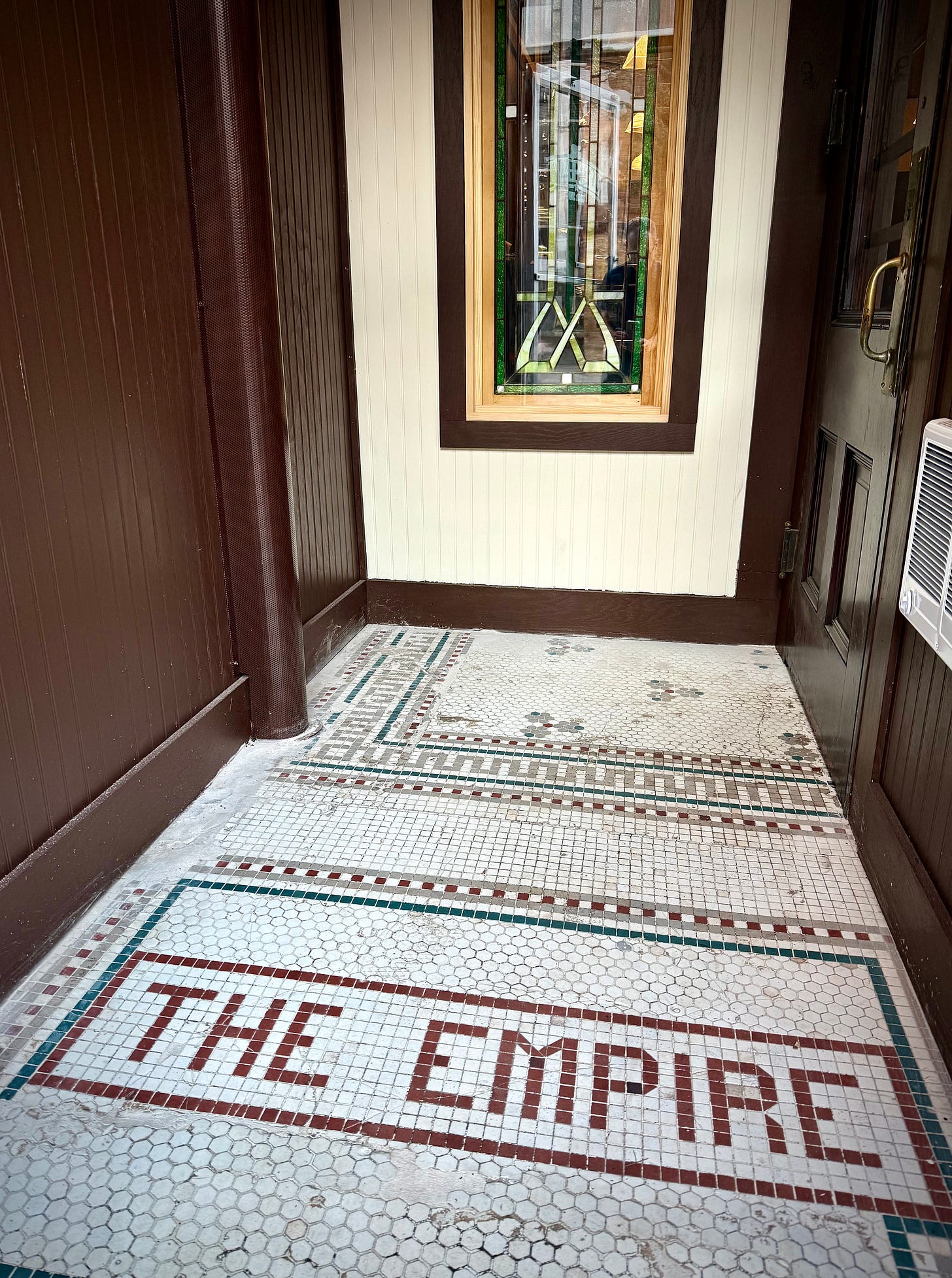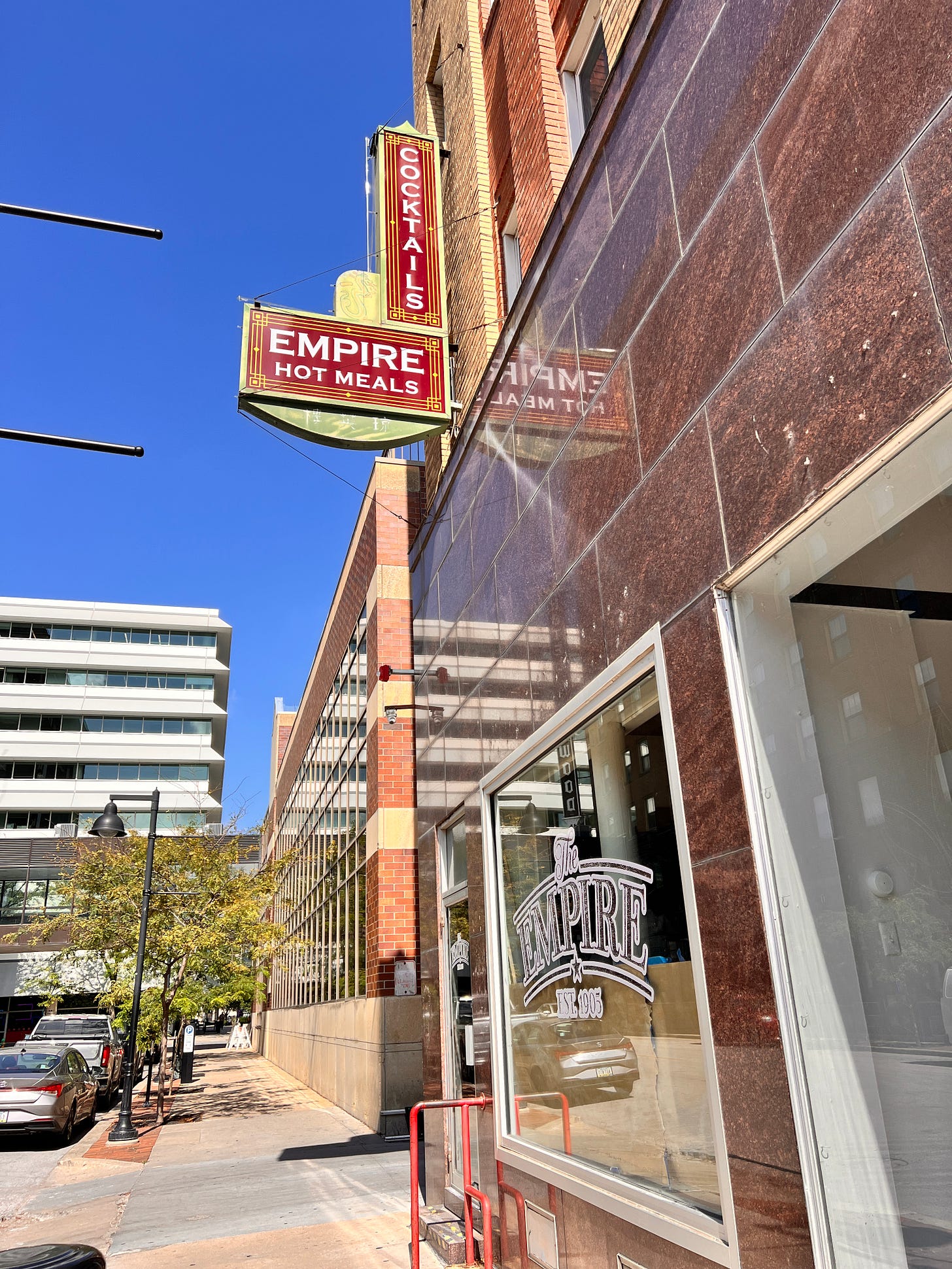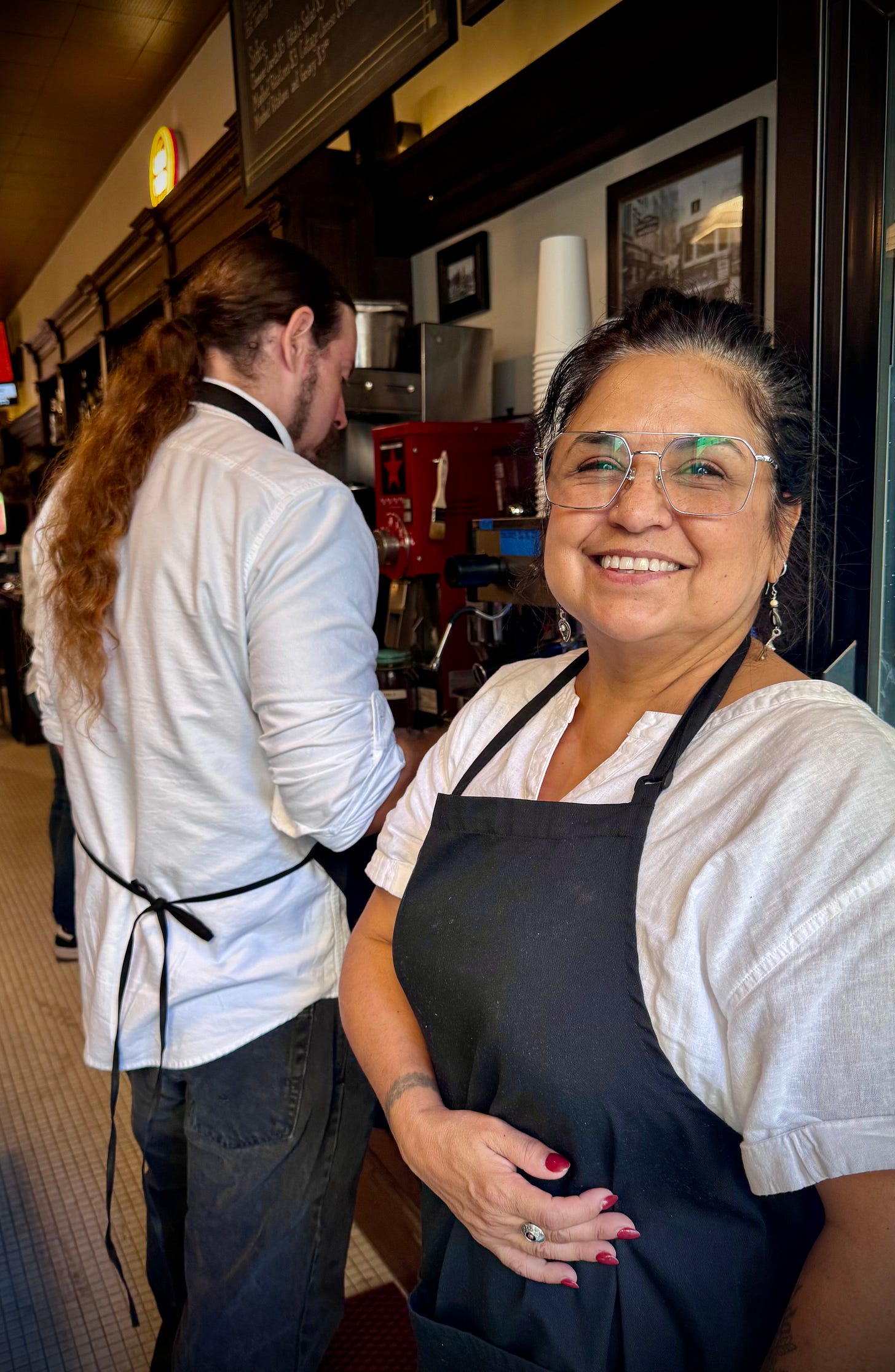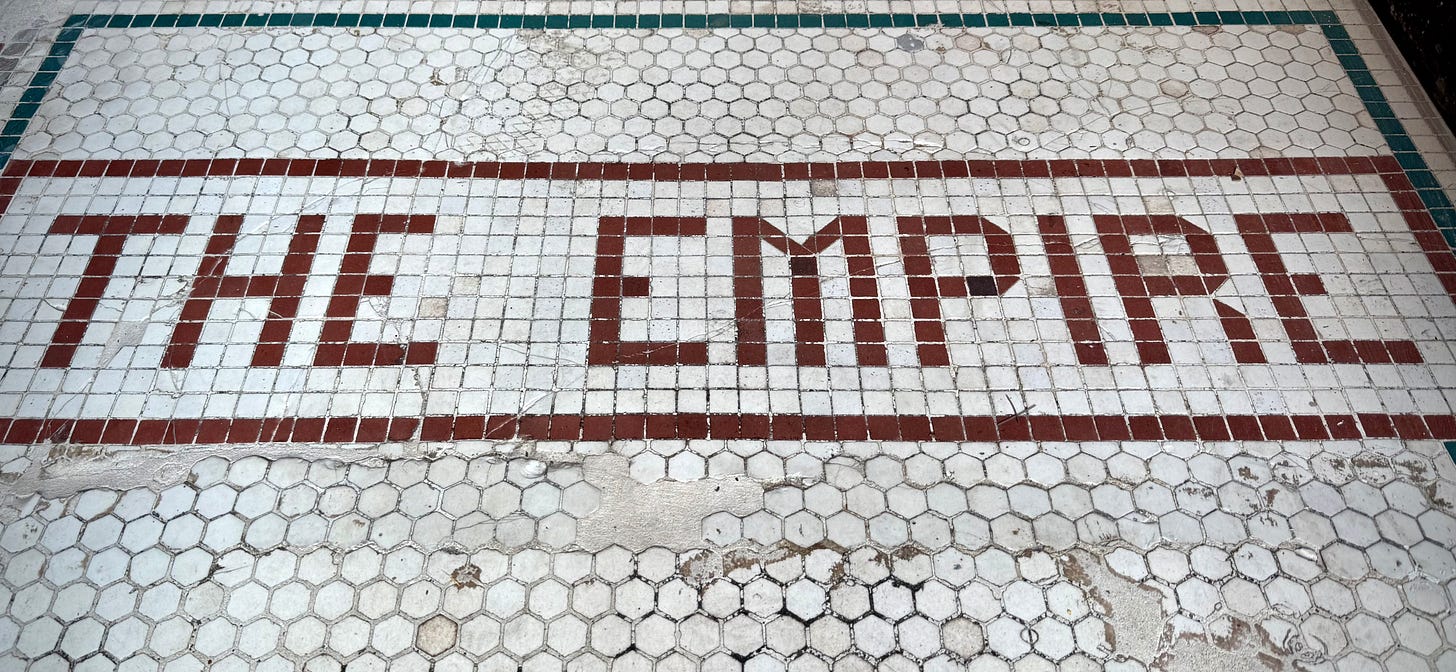An Empire state of mind returns to Fourth Street in downtown Des Moines
From Kane in the early 20th century to Bruno in the 21st, the dreams of a saloon keeper endure.
How will we be remembered in the decades long after we’re dead?
We may not have written a 300-page autobiography, paid for naming rights to a cultural landmark, or etched a profound quip into our headstone.
What if we’re remembered by nothing more than, say, nine letters set into a tile floor? Letters people unceremoniously tread on daily and then get quickly covered and forgotten for decades?
Such was the seeming fate of Matt Kane, an early 20th century “saloon keeper” in downtown Des Moines who opened his Empire Bar in April 1905 at 223 Fourth St. His watering hole never had time to become a local staple. The bar closed barely more than a year later in July 1906.
The bar’s floor featured “THE EMPIRE” spelled into the tile of its entryway—the letters pieced together as a mosaic of tiny square tile, surrounded by a hexagonal pattern.

Kane, originally from Maine, was also involved in the Kirkwood Hotel across the street. The Des Moines Register reported in 1915 that he sent a farewell message to the mayor and city council as he retired from the saloon business. At that time, cities were experimenting with prohibition ahead of the national alcohol ban of the 1920s.
“The evident dryness discouraged all who looked longingly inside, and the would-be customers passed on,” the Register wrote of the closure of Kane’s final barroom.
Kane died March 7, 1916, at the Mayo hospital in Rochester, Minn., at the age of 62.
Meanwhile, “THE EMPIRE” in tile was soon forgotten beneath an eventual five layers of flooring just inside the front door at 223 Fourth St.—until this year, when modern restaurateur and “saloon keeper” Jeff “Bruno” Bruning and his business partners unearthed it. That revelation and its civic history inspired them for the branding of their latest hangout.
So, after an epic 119 years of world wars and space exploration and cat memes to define our modern civilization, the Empire has circled back around with a belated sequel. It officially opened Oct. 2.
“We’ve always had this desire to transform old buildings back into something special and use the old building to the best of what was left for us,” said Bruning, a partner in Full Court Press.
In 1903 the State Insurance Company converted the building into the Elliott Hotel, with a saloon on the main floor. Kane tried his Empire Bar there, then the space cycled through the Elliott Buffet (1906-26), Dixie BBQ (1929-49), King Ying Low (1949-2008), and, finally, Fong’s Pizza.
Full Court Press moved Fong’s to the East Village earlier this year but still had a few years left on its lease at 223 Fourth, triggering this opportunity. Generally speaking, the Empire is the 13th venue in the ownership group’s lineup.
The modern Empire was “reimagined” with the help of Don Short of West End Salvage, architect Ryan Ellsworth of Invision Architecture, and owner Dennis Epps of Full Court Press. It specializes in convenient over-the-counter value meals (sandwiches, chicken and noodles, etc.), beer, and cocktails.
And coffee.
The Empire also represents another comeback—a partial return for Ritual Café after the popular downtown coffee shop closed this summer. Owner Denise Diaz had a 20-year run with Ritual next door to Pappajohn Sculpture Park. Before that, she got her start in coffee on Fourth Street within eyeshot of the Empire, in what used to be Java Joe’s, from 1992 to 2004.
“It’s almost like I grew up and went to coffee college,” Diaz said of her time at Joe’s.
As she was closing Ritual, she was unsure of her next step. A chance conversation with Bruning led her to join the Empire to continue serving her Mayan mochas and horchata lattes. But Diaz always has leaned into coffee as a way to create gathering spaces that welcome everybody, from downtown workers to artists to activists and everybody else.
“It’s a way of being part of a community,” she said.
I’m almost certain I purchased coffee from Diaz on the tragic morning of 9/11 on my way to work in the Register newsroom. I remember placing the steaming cup in the drink holder as I started my car and headed north. It was while rolling down Fourth Street that I heard newscaster Carl Kasell’s voice on National Public Radio reporting the curious crash of an aircraft into the World Trade Center. Later that day I was hawking extra print editions on the streets downtown. A few days later I attended a public prayer gathering barely a block away from where the Empire now stands once again.
Every city offers persistent reminders of what can crumble or somehow manage to endure.
The Fourth Street block between Court and Walnut feels like a concentrated repository of civic memory.
It’s true for me personally: I used to discover great up-and-coming bands at the Vaudeville Mews. Enjoyed countless lunches at King Ying Low. I can still hang out at the Lift and spin vinyl LPs. Watch soccer at the Royal Mile. Begin wandering into the Downtown Farmers Market.
It’s true for Bruning and Full Court Press, because the street (including the stretch south of Court) was home to three of their first five businesses, with Royal Mile and Hessen Haus still there alongside the new Empire.
“It feels kind of full circle,” Bruning said.
When you enter the Empire, glance down at the tile and give a fleeting thought to a long-forgotten saloon keeper named Kane.
Iowa Writers’ Collaborative
I’m proud to be a member of the Iowa Writers’ Collaborative. Meet our writers here, or subscribe to our free weekly roundup and our Wednesday “Flipside” edition featuring sports, music, culture, and other topics.




